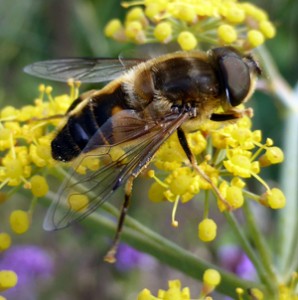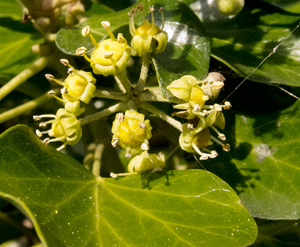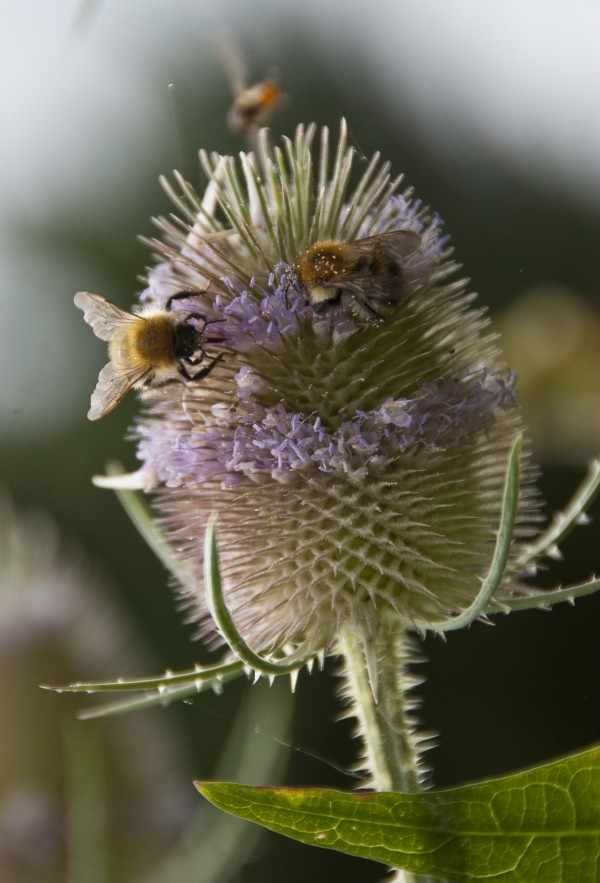Floral visitors

Bees are (usually) frequent visitors to our gardens. Gardening catalogues and websites are ‘always’ extolling the virtues of particular flowers / plants in terms of attracting insect visitors to our gardens. These insect visitors are important pollinators – not just for garden flowers, but also for fruit trees and other soft fruits. But is there any evidence about the ‘best flowers’ to plant for insect visitors – other than “opinion and general experience”.
Now some research on this has been done by the Department of Apiculture at the University of Sussex. The Department and Professor Ratnieks (which have featured in the woodland blog before) are involved in “The Sussex Plan for Honey Bee Health and Well being”.
Much of this particular investigation has been carried out by PhD student – Mihail Garbuzov. The work involved recording the insect visitors to an experimental garden(s) - with some 19 different species and 13 varieties of Lavender. The number of insects visiting particular batches / clumps of flower was recorded throughout the summer months – over two summers. Analysis shows that some plants are much better at attracting bees / pollinators than others. The much planted pelargoniums (in municipal parks) are not very good at attracting bees, whereas lavenders (of all types), borage, marjoram and (open flowered) dahlias attract many bumble bees, bees, hoverflies and butterflies .
.
Though these flowers are important for pollen and nectar throughout the summer months, the bees and other pollinators need other to find other sources in the autumnal months; and perhaps strangely, their needs are met by the green and inconspicuous flowers of Ivy (Hedera helix).
Ivy has high quality nectar – with a lot of sugar in it. Ivy is very important to bees and other pollinators in September and October. Again, this research has been conducted by the Department of Apiculture at Sussex.
featured image : Pam Symons
Comments are closed for this post.
Discussion
We have a considerable number of plants appealing to bees in our urban garden, herbs, buddleia,lavender, geranium, to name some, but for popularity to bees, hoverflys and butterflies – the self seeded teasels, that sprout up everywhere, won hands down.
For some reason, the flowers were almost white this year instead of the normal faded purple but this only seemed to increase their magnetism.
Now is the time to begin thinking of next spring! Bumblebees will thank us all if we ensure there are Berberis, Bluebell, Broom, Crocus, Flowering Currant, Pussy Willow & many others in flower in the spring. There are lots of sites on the internet where you can learn more about bee-friendly gardens. Check out the Bumblebee Conservation Trust for ideas to help ALL our pollinators.
I wholeheartedly agree with this article. A few weeks back I was at a local horse racing establishment whose courtyard was surrounded by Bees, Hoverflies and the like, why was this? This was due to the well-presented flower beds being rich in many types of Lavender. Just the other day, I was up on the local hills watching at least five types of insect buzzing around an extensive Ivy bush, so yes clearly both plants are proving to be lifelines after a Summer which for once, was very kind to their type.
Best Wishes
Tony


Yes, teasels were attractive to bees – see photo at end of blog.
Blogs
2 November, 2013